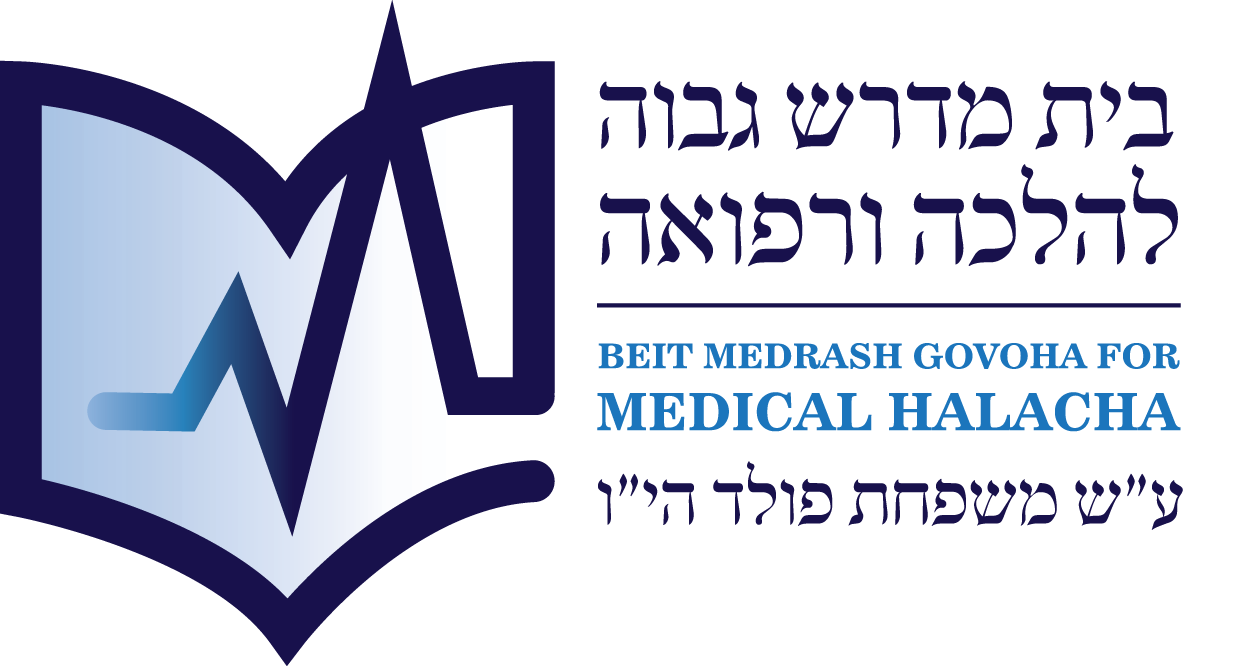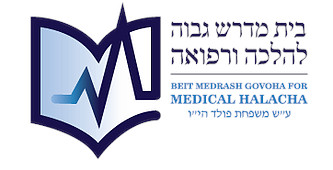A substantial portion of contemporary communication occurs through instant messaging on platforms such as WhatsApp, Signal, and Telegram. Professionals in medical, emergency, and rescue services commonly use WhatsApp.
When Pikuach Nefesh needs emergency communication on Shabbos, WhatsApp is often the most efficient method, especially for groups. It is particularly useful for notifying a security standby unit or local emergency response team members. In this scenario, several important and highly practical Halachic questions arise. We will discuss some of these issues along with Halachic rulings:
Group Messages: If someone needs to send a message to some group members, but not all, what should he do? Posting the message in the group reduces Chillul Shabbos for the sender, since he would send only a single message instead of multiple individual ones. On the other hand, this may cause the unintended recipients to open the message, causing unnecessary Chillul Shabbos.
We posed this question to haGaon Rav Asher Weiss Shlit”a, who ruled that the sender, who is doing so permissibly for Pikuach Nefesh, should send the message only to those who genuinely need to receive it. This avoids causing others to be Mechalel Shabbos unnecessarily.
Composing Messages: What is the preferred method to minimize Chillul Shabbos? Messages can be typed, recorded as voice notes, or created by voice-to-text transcription.
Before analyzing the Halachic preference, we must establish a fundamental principle: Speed and clarity are critical in emergencies. The method of delivering the message can significantly affect its impact. For example, typing may take longer when conveying meaningful or detailed content, whereas recording a voice message can provide more information quicker. Additionally, a recorded message may be more understandable than a written one, as tone, emphasis, and nuance are better conveyed by voice. Therefore, in urgent situations, the primary concern is which method will most efficiently and clearly communicate the message?
When the message involves Pikuach Nefesh, but there is no significant difference in speed or clarity between writing or recording, we can ask which method is Halachically preferable? In terms of Hilchos Shabbos, is there a difference between recording and typing? Furthermore, does it matter whether the text is manually typed or generated via voice transcription?
Typing on digital devices on Shabbos has been addressed by contemporary Poskim since the introduction of computers, and even earlier regarding calculators. They have discussed whether this activity constitutes the Melacha of Boneh due to the changes in electrical current, as per the opinion of the Chazon Ish. Others have considered whether it constitutes Makeh b’Patish, or if writing on an electronic screen violates the prohibition of Kosev. Although the writing lacks permanence as it disappears when the screen turns off or loses battery, it is still recorded in memory. An in-depth discussion of whether writing that appears on one device but is stored on another constitutes Kosev isbeyond the scope of this essay, but the consensus of the Poskim is that it is prohibited.
Unlike typing, digital recording is performed primarily through speech (aside from the manual actions of starting and sending the recording). In Halacha, there is extensive discussion about the status of outcomes effectuated through speech:
Chaza”l state in Bava Metzia (90b), regarding the prohibitions of “Do not muzzle an ox while it is threshing” (Devarim 25:4) and of plowing with mixed species:
If he muzzled [the animal] with his voice or led it with his voice – R’ Yochanan says he is liable [since] moving one’s lips (“Akimas S’fasayim”) is considered an action. Resh Lakish says he is exempt [as] speech is not considered an action.
The Halacha follows R’ Yochanan, that speech is considered a form of action.
Similarly, Chaza”l state in Yerushalmi Kilayim (8:2):
R’ Yosi bar Chanina said: one who leads animals of mixed species with his voice is liable. And so it was taught: if he leads, pulls, or calls them and they follow him, he is obligated to pay as a Sho’el. But didn’t Shmuel teach: if the animal was outside the Techum and he called it and it followed him, he is exempt? There [in Shmuel’s case], it followed of its own accord; here [in the first case], it followed against its will.
The Eglei Tal[1] (Choreish 8) explains that there is no difference between leading an animal by hand or by voice, since it follows due to fear in both cases.
It is evident from the Yerushalmi that there is a difference between:
- Causing the animal to move against its will by vocal intimidation (e.g., it moves out of fear of being struck), in which case the voice is considered a Ma’aseh;
- Causing it to move willingly, such as when calling it and it follows, where the animal’s will plays a role. In this case, the speech is not deemed a decisive action.
It follows that a direct result that occurs due to speech is considered an action, especially when it is the standard method of operation and is not an unusual means of accomplishing that task. In these cases, speech itself is Halachically deemed a Ma’aseh.
We also find several examples of actions performed via speech in later Poskim. My friend, R’ David Yudelevitz, has compiled several relevant sources:
- Murder through speech: In Sanhedrin (58b), the Gemara states that a Nachri who strikes a Jew is liable to death. This is derived from the Pasuk, “And he struck the Egyptian” (Sh’mos 2:12). Chaza”l explain that Moshe killed the Egyptian using one of the Holy Names of Hashem. The Poskim deduce that one who kills another through speech (via a Divine Name) is considered as if he physically killed him. Were the Egyptian not already liable to death for striking a Jew, Moshe would not have been permitted to kill him even using Hashem’s name. The reason is straightforward: Akimas S’fasayim is considered a physical act, akin to shooting an arrow. (See Shu”t Halachos Ketanos 2:98; Shu”t Mahari Asad O.C. 199; Shu”t Roshei Besamim 200:23.)
- Consulting with the Urim v’Tumim on Shabbos: The Midrash Shmuel (21:22) states that when David came to Achimelech, it was Shabbos, and he consulted the Urim v’Tumim. The Gemara in Yoma (73a) explains that answers from the Urim v’Tumim would emerge through letters protruding or joining together. The Acharonim discuss whether this might violate the prohibition of writing on Shabbos. But if so, how was Achimelech permitted to consult them for David? Various answers are given: Either the writing was non-permanent, or it was justified due to Pikuach Nefesh (see Shu”t Nish’al David O.C. 9; Da’as Torah of the Maharsham O.C. 340:3). In any case, these discussions reinforce the principle that Akimas S’fasayim is considered a Ma’aseh.
- Creating a human on Shabbos: In a similar vein, the Geza Yishai[2] (1:1) raises the question of whether creating a human being on Shabbos would be permissible.[3] He begins by citing the Gemara in Sanhedrin (101a), which permits whispering incantations to snakes and scorpions on Shabbos so they do not harm. Rashi explains that the whisper immobilizes them, and since this is not a normal form of trapping, it is not prohibited (see the Mishna Berura 328:143). At first glance, this would suggest that speech is not considered an action. However, Geza Yishai dismisses this proof, explaining that this is a specific Heter based on the unusual method of trapping, but, in general, speech is considered a Ma’aseh in Halacha.
- Writing on Shabbos via a Shem: A well-known difficulty is raised by the Rosh (Pesachim 10:13): according to the opinion that Moshe Rabbenu passed away on Shabbos, how could he have written thirteen Torah scrolls on the day of his death, as stated in the Midrash on Parshas Vayelech? The Shelah (cited by the Chasam Sofer 6:29) answers that Moshe wrote the scrolls by commanding the quill, and this does not violate the Issur of writing on Shabbos. This seems to imply that Akimas S’fasayim is not considered a Ma’aseh. However, Acharonim have proposed other explanations. For example, some suggest that Moshe wrote the Sifrei Torah with tears, and only writing with ink is Asur mid’Oraisa (see the notes of R’ Tzvi Pesach Frank zt”l to Yabia Omer 1).
- Harvesting via a Shem: The Chakal Yitzchak[4] (Shu”t 22) debates whether a person who harvests his field by uttering a Divine Name or through sorcery is obligated in the Mitzvah of Pe’ah. Since a field harvested by Nachrim or where the crop was detached from its stalks by wind or animals is exempt from Pe’ah, perhaps the same applies in this case. He concludes that since Akimas S’fasayim is considered a Ma’aseh, it is considered as if he had harvested the field directly and is definitely obligated in Pe’ah. [However, he maintains that this logic does not carry over to Hilchos Shabbos. Even though Akimas S’fasayim is considered a Ma’aseh, the prohibitions of Shabbos are derived from the Mishkan, where only actual physical labor was performed. This is why a Melacha she’Eina Tzricha l’Gufa is not considered a Melacha. Certainly, then, actions performed via speech do not constitute Melacha. These are innovative claims and further debated by later Acharonim.]
However, there is more reason to consider speech a Melacha in our case. Unlike the cases above, typing messages is not conventionally performed directly, and our question revolves around an unusual method of accomplishing it. The process is designed to be conducted through speech; the speech itself is processed and converted to text. Since the resulting transcription is both the expected and desired result, and this is a usual means of composing text messages, there seems to be no doubt that it would be considered the speaker’s action.
However, although it is no more or less of a Melacha than typing, recording is preferable since it is a single action (creating the recording) as opposed to typing, which involves numerous, separate acts of writing letters and words.
Therefore:
- A phone call is preferable to other methods (using a speed-dial or other shortcut), as it leaves no lasting digital imprint. In contrast, recordings are preserved, which raises a concern for Kosev. When using a smartphone, the caller should keep the phone close to his ear throughout the conversation to ensure that the screen does not light up or activate repeatedly during the call.
- If it is not possible to make a phone call (or if he would need to enter the phone number or write it down manually[5]), recording a voice note is preferable.
- If it is necessary to send a written message, voice-to-text transcription is preferable to typing the message directly.
- Of course, even typing is permitted if no other method is available, as nothing stands in the way of Pikuach Nefesh.
[1] Rabbi Avraham Bornstein zt”l of Sochatchov (1838–1910), author of the Avnei Nezer and the founder of the Sochatchov Hasidic dynasty.
[2] R’ Yehuda Shmuel Ashkenazy zt”l of Livorno (19th century). Geza Yishai was published in 1842 and contains commentary and insights on Midrash Rabba, integrating Kabbalistic and philosophical ideas with Midrashic interpretation.
[3] [Editor’s note: R’ Ashkenazy is referring to using incantations and formulae from the Sefer Yetzira.]
[4] R’ Yitzchak Isaac Weiss Hy”d (1875-1944), second Spinka Rebbe and son of the first Spinka Rebbe, R’ Yosef Meir Weiss zt”l.
[5] [Editor’s note: I.e., he cannot utilize a speed dial or shortcut]











Add comment